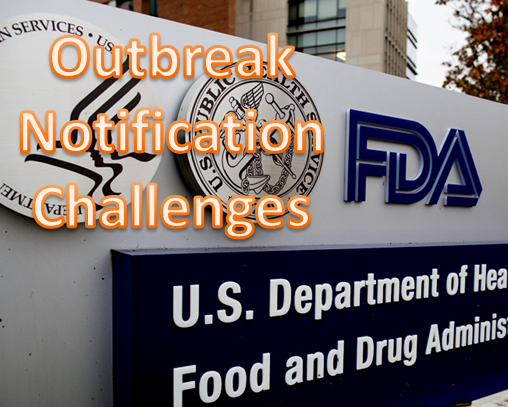Papaya outbreak highlights FDA outbreak notification challenges
The problem of issuing Broad warning

The papaya outbreak was announced first on June 28, 2019. Because the FDA did not have sufficient information and were unsure as to the exact origin of the problem, the FDA, along with the CDC, issued a blanket warning against eating any papayas from Mexico.

On July 5 when more details became available, the CDC announced that a total of 71 people infected with the outbreak strain of Salmonella Uganda had been reported from 8 states (Connecticut 14, Florida 1, Massachusetts 5, New Jersey 18, New York 27, Pennsylvania 4, Rhode Island 1, and Texas 1). Cavi brand whole, fresh papayas distributed by Agroson’s LLC was determined to be the likely source of this outbreak. All other papayas from Mexico are safe to eat according to the FDA.
A similar situation happened before Thanksgiving of 2018 when consumers were warned against eating any romaine lettuce. On December 13, 2018, Adam Bros. Farming, Inc., in Santa Barbara County was identified as the source of the outbreak. After that, the FDA cleared all other romaine lettuce safe. A new label was introduced to clarify the source of the lettuce.
In both cases, a wide announcement was made, and it took a week before more specific guidance on what brands or locations of origin to avoid became available to the public.
An article in Rollcall quoted Frank Yiannas, the head of the FDA’s food safety programs, saying that “the inability to track and trace foods with speed or precision” is the agency’s “Achilles’ heel.” He claims that the infrastructure required to trace outbreaks to its source is not there yet.
Reasons for the flawed system and proposed improvements
The FSMA law is almost a decade old. It originally was designed to modernize the food safety system, but now it is starting to show its age as many things have changed. Many companies, especially small companies, have difficulties understanding the FSMA rules and complying with them. It seems like it is time for FSMA to be reviewed and updated.

The technology exists that can significantly shorten the time to traceback contaminated foods, primarily produce. A shift to digital tracking, from the current manual system, with technologies like blockchain could much faster pinpoint the sources of outbreaks. This will eliminate the need for broad recalls. Currently, the tracing system is extremely fragmented and composed of many small companies that might have a harder time adopting digital tracking methods.
According to FDA Frank Yiannas FSMA is a vision that will continuously change to improve over time. Acting FDA Commissioner Ned Sharpless and Deputy Commissioner Frank Yiannas announced on April 30, 2019, that a New Era of smarter food safety is coming. It is an effort to incorporate new and emerging technologies with FSMA. The FDA’s new era of more intelligent food safety explores new technologies to upgrade the capabilities to quickly track and trace food through the supply chain, such as blockchain.
Budgetary considerations
According to Rollcall after increasing food safety resources from $700 million in 2009 to around $1.1 billion today, congress is feeling fund fatigue and are frustrated with the slow progress of implementing FSMA. Rosa De Lauro (D), a senior member of the Appropriations Agriculture Subcommittee, which funds the agency, was critical of how the agency handled the initial papaya announcement. Rollcall wrote that “De Lauro noted that the first warning of an outbreak didn’t come from the FDA or CDC but from a fruit and vegetable industry trade publication, which published a story about the outbreak on the morning of June 28. It wasn’t until 3:30 p.m. that the CDC sent its alert, and the FDA’s came an hour later. “ When it comes to announcing an ongoing outbreak, where consumers potentially have contaminated food in their homes, minutes matter,” DeLauro wrote in a letter to acting FDA Commissioner Ned Sharpless.
Budgetary constraints may limit the FDA’s ability to move forward with some of its more ambitious initiatives. Until this happens, outbreak notification will remain as a dilemma.
